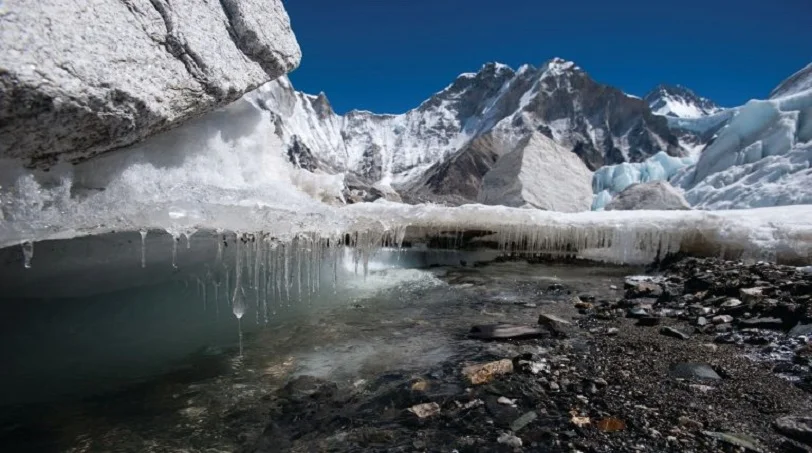
By Bloomberg
New Delhi- Rapidly melting glaciers in Asia’s Hindu Kush Himalayan region — home to the world’s highest mountains — are threatening the lives and livelihoods of as many as two billion people downstream, according to a new study.
., the International Centre for Integrated Mountain Development, or ICIMOD, found in its latest study. This may over time drastically reduce freshwater supplies in 12 rivers that flow across 16 nations in the region, it said.
These mountain ranges, which stretch over 3,500 kilometers (2,175 miles) in length from Afghanistan in the west to Myanmar in the east, are also seeing a shrinking permafrost that can trigger more landslides, the study said. The Nepal-based ICIMOD has eight member nations across Asia including China and India.
The planet is already 1.2C hotter than during pre-industrial times, melting Arctic and Antarctic ice at a record pace. As heat waves bake more and more countries from the UK to China, wildfires scorch Canadian forests and a very severe cyclone lashes into the coastlines of India and Pakistan, there’s a growing acknowledgment that climate emergencies are no longer just freak weather events and need careful policy action. While severe flooding and landslides left 2,000 tourists stranded in Sikkim in the past few days, nearly 100 people reportedly died in eastern Indian as a result of higher-than-normal temperatures. Local authorities disputed the fatalities are linked to the heat.
Besides the risk of flash floods and landslides, the region is at a high risk of glacial lake outburst floods with 200 glacier lakes across Hindu Kush Himalaya “deemed dangerous,” the report said. The cascading effects threaten to upend agriculture, food security, fresh water availability and energy sources. It can also endanger some plant and animal species in the biodiversity hotspots to the point of extinction.
“As ice retreats, land where ice used to be becomes unstable and starts to move — the extra melt water then has the potential to easily wash that away, resulting in destructive mass flows,” said Jakob Steiner, a research fellow at ICIMOD.
The changing cryosphere is also expected to put infrastructure in these mountainous regions at risk or economically unviable. “After the peak glacier melt is reached and meltwater recedes, future hydropower stations may find themselves over-sized, lacking the necessary water they were originally designed to harness,” Steiner said.
The report also spoke about the need to urgently scale up adaptation of the affected local communities to climate change.
“It is beyond time that governments, donors and agencies step up: to exit fossil fuels and honor their commitments to limit warming, to help communities adapt to those temperature rises already locked in and to compensate them for property and ways of life that have already been lost,” said Saleemul Huq, a climate change expert who’s also on the advisory committee to COP28.
Follow this link to join our WhatsApp group: Join Now
Be Part of Quality Journalism |
Quality journalism takes a lot of time, money and hard work to produce and despite all the hardships we still do it. Our reporters and editors are working overtime in Kashmir and beyond to cover what you care about, break big stories, and expose injustices that can change lives. Today more people are reading Kashmir Observer than ever, but only a handful are paying while advertising revenues are falling fast. |
| ACT NOW |
| MONTHLY | Rs 100 | |
| YEARLY | Rs 1000 | |
| LIFETIME | Rs 10000 | |












